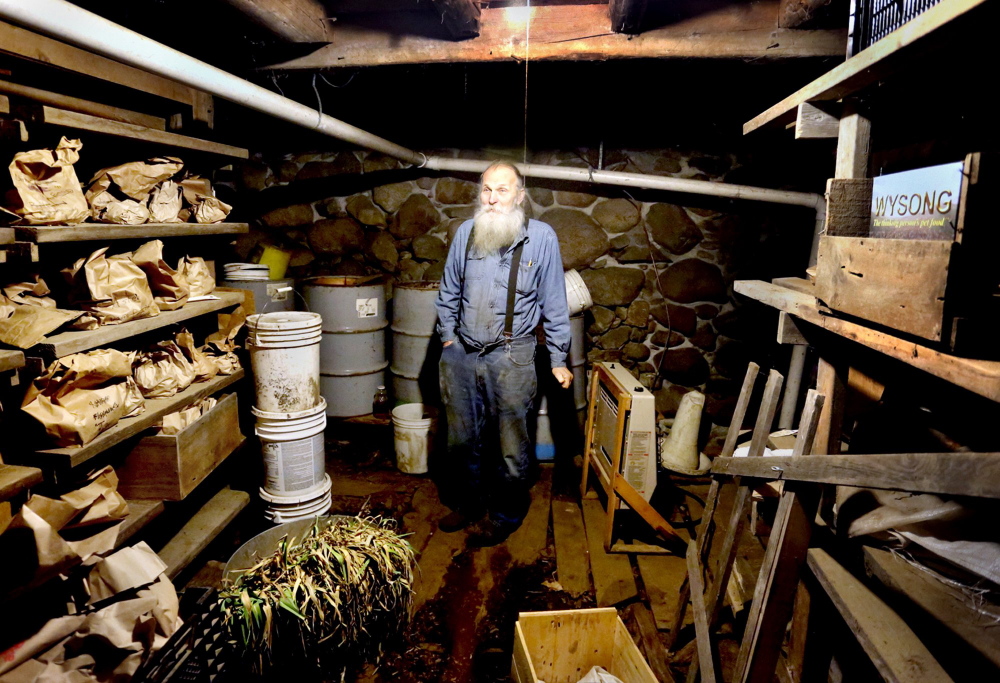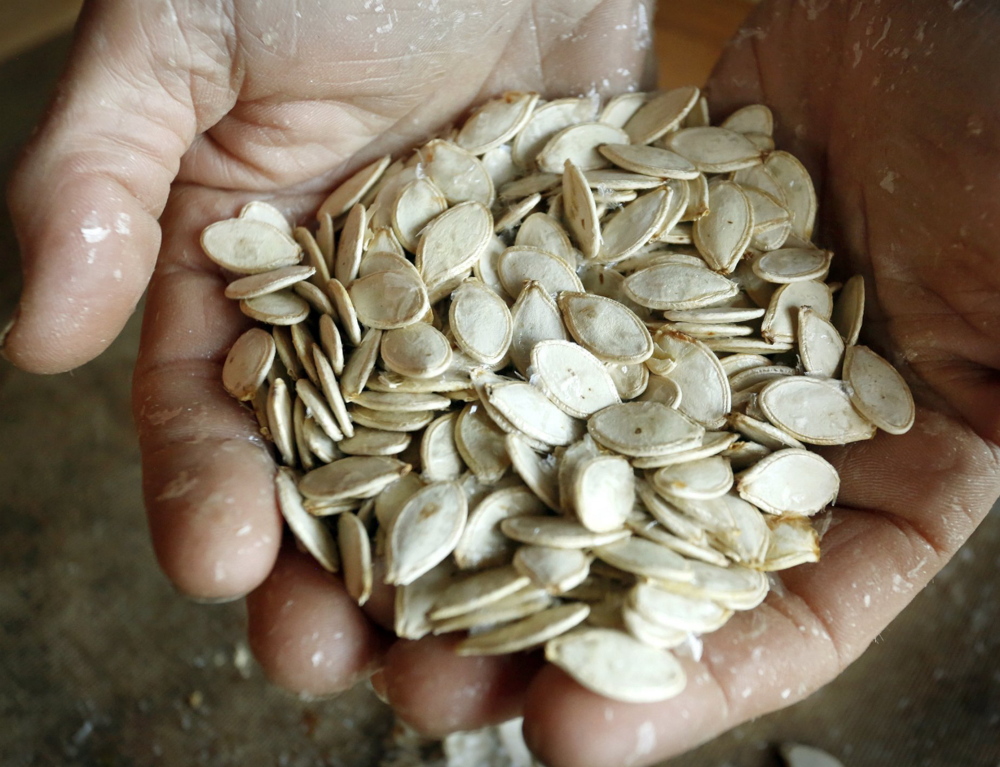Saving seeds can save you money. More importantly, it can help save the heritage, history and diversity that come from preserving vegetable varieties.
Most casual gardeners peruse the catalogs each winter, maybe buying a few new seeds to try but mostly sticking with the same varieties of peas, beans, tomatoes and potatoes that have produced well and tasted good in years past.
Will Bonsall of Industry, Maine’s seed saving guru through his Scatterseed project, believes that even people with small suburban gardens should get their seeds the way their ancestors did, by letting some of their crops go past the prime eating stage to produce mature seeds that can be planted in future seasons.
Bonsall gives many reasons for saving seeds, but he believes the most important is that you can get the best plant varieties for your own property.
“People assume the stuff in the seed catalog is the cream of the crop,” he said, “but sometimes it is the dregs of the barrel.”
Catalogs have seeds that he compares to Swiss Army knives (he abbreviates it as SAK seeds): They do everything, but don’t do anything well. For seeds, that means they will grow adequately everywhere, but are not excellent anywhere.
As an example, Bonsall cited the Royal Chico tomato, a paste tomato that is dense, dry and ripens late. Its denseness suits sauce-making and Bonsall also likes its schedule because he can pull entire plants and hang them upside down in his cellar, where the fruits will slowly ripen. Then he can process them into sauce later in the season when he is less busy.
At one point, though, Johnny’s Selected Seeds replaced Royal Chico with a juicier tomato that ripens two weeks earlier, characteristics that didn’t meet Bonsall’s needs. Fortunately, he had saved enough Royal Chico seed that he didn’t have to worry.
Bonsall also noted that almost all pea seed is produced by a single grower in Idaho. If that company decides to drop the variety that is your favorite, all the catalogs will stop carrying it, too.
If you have never saved seeds before, Bonsall recommends beginning with self-pollinating vegetables. Since they will not be cross-pollinated by another variety of the same species growing nearby, you will get the same plant next year that you got this year. Self-pollinated varieties include common beans, peas, eggplants, peppers and tomatoes. These all are annuals, which means they do all of their growing in one year, which is easier for you than biennials.
“After a couple of years, however, I encourage everyone to try crossers,” Bonsall said. “Anyone with a basic knowledge can do it.”
One way to handle cross-pollinated plants, such as cucumbers, would be to grow all the cukes you plan to eat in your regular vegetable garden, and the ones you are growing for seed in a separate plot, about 100 feet away.
The seeds you plan to save must come from fully ripe fruits. Sweet corn is a crosser, and you must allow part of the crop to go way beyond when it would make for good eating so the seeds are fully mature. Peppers should turn their fully mature color, usually red, and tomatoes should be dead ripe. Save at least five years of seed at a time. You have to save it from many different plants, making it a somewhat laborious process – why put yourself through it every year?
Be sure the seed you save is completely dry, or it won’t keep. Bonsall said seeds will last longer if you store them in air tight containers – canning jars or double Ziploc bags work – and freeze them. Remember to let the container with the seeds warm to room temperature before you open it, or condensation will get on the seeds, which will damage them when they go back into the freezer.
I once used leftover potatoes as seed potatoes, but stopped when I read somewhere that the practice promotes disease. Bonsall told me not to worry. If a potato has a serious disease, he said, it will rot well before it is time to plant it. And if it has one of the many systemic viruses that will live in the tubers, it probably won’t cause any problems.
Bonsall, who is a keynote speaker at this year’s Common Ground Fair (Sept. 25-27), has a lot more information on seed-saving in his “Essential Guide to Radical, Self-Reliant Gardening,” which I wrote about in early July.
I, for one, am going to experiment with seed-saving this year. I’ve pulled the peas, so it’s too late for those. But I do have a healthy crop of Black Coco beans, which are self-pollinated and I am growing for use as dried beans, anyway. I’ll try saving some of those for planting next year.
And if all the colored-flesh potatoes I’m growing this year do well, I’ll plant some of those, too.
I’m feeling more self-reliant already.
Tom Atwell has been writing the Maine Gardener column since 2004. He can be contacted at 767-2297 or at tomatwell@me.com.
Copy the Story LinkSend questions/comments to the editors.




Success. Please wait for the page to reload. If the page does not reload within 5 seconds, please refresh the page.
Enter your email and password to access comments.
Hi, to comment on stories you must . This profile is in addition to your subscription and website login.
Already have a commenting profile? .
Invalid username/password.
Please check your email to confirm and complete your registration.
Only subscribers are eligible to post comments. Please subscribe or login first for digital access. Here’s why.
Use the form below to reset your password. When you've submitted your account email, we will send an email with a reset code.